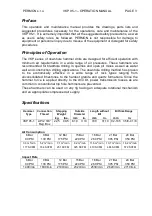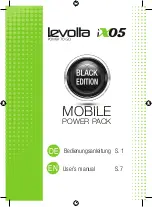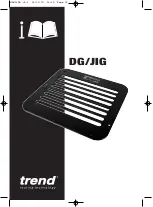
PERMON s.r.o. VKP 95-1 – OPERATION MANUAL PAGE 5
Safety Precautions
The following safety precautions apply to all drilling equipment supplied by PERMON
s.r.o. including the VKP 95-1 and the bits discussed in this manual.
Personnel must become completely familiar with the proper procedures and safety
precautions before operating and maintaining the hammers and bits.
Failure to comply with safety precautions can result in serious or fatal injury to
personnel, and improper operation and maintenance can cause equipment damage
or excessive wear on the hammer and bit.
•
Wear proper clothing. A hard hat, work gloves, safety shoes, eye and ear
protection are required. Don’t wear loose clothing that can get caught in the
equipment.
•
Wear goggles. Safety glasses are required. Loose chips, rock and dust are blown
into the air during drilling. Also, wear safety glasses when resharpening bits.
•
Protect lungs. Wear a respirator to keep from breathing or ingesting dust,
especially if drilling without water or foam injection.
•
Do not drop the hammer or bit. This equipment is very heavy. Handle it with care.
In addition, auxiliary lifting equipment is suggested.
•
Know the drilling formation. Exhaust air and hydrocarbons can form an explosive
mixture under certain drilling conditions. If the drilling formation is known, proper
precautions can be taken to avoid potential danger.
•
Respect the equipment. Do not operate the hammer at excessive pressures or
speeds. Follow the instructions in this manual and use the suggested procedures
for operation and maintenance.
•
The bit can drop out of the chuck by as much as 1“ (25 mm). Caution is
recommended when handling the hammer in order to prevent body parts, such as
hands and fingers, from being pinched between the chuck and bit.
Preparation for Drilling and Drilling
Each hammer is assembled and tested before shipment. The hammer is shipped
with all joints hand-tight.
It is suggested that all personnel operating, handling or maintaining the hammer
become completely familiar with the hammer and bits, and the instructions in this
manual.
When handling the hammer and drill pipe, always keep the inside pipe and threads
covered to prevent dirt, rust, scale or other objects from entering the hammer or the
drill pipe.
Always use the proper wrenches, tools and procedures when handling the hammer
or changing the bit.
All thread connections must be coated with thread compound (copper, metallic zinc
or graphite) before the hammer is assembled and operated. Do not allow thread
compound, dirt or wire brush to fall into hammer.
Important: Do not use bent joints of pipe. This cause uneven hammer wear and
premature bit failures. If the joint does not shoulder easily, check the threads.



























